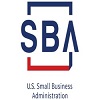What are The Main Purposes of FDA Adverse Event Reporting?
12/21/2019
Category: Other Blogs
The US FDA (Food and drug administration) is in charge of upholding patients and defending public health by guarantee the safety, security of medications, and efficacy. In order to achieve safety, the FDA’s major monitoring method is preventing adverse drug events, which happen with promoted drugs is the adverse event reporting system (AERS). The FDA defines an adverse event as any undesirable experience connected with the use of a therapeutic product. It is mainly focused on serious adverse events that are adverse events with a patient result such as death, hospitalization, life-threatening injury, irregularity or birth defect, disability or permanent harm, and other severe effects. The fragmented and unpaid process of FDA Adverse Event Reporting can be incorrect and time delayed.
What is Adverse Event Reporting System?
The adverse event reporting system (AERS) is a developed information file designed to support the FDA’s post advertising safety observation program for all accepted medicine and beneficial medical products. The FDA uses AERS to observe new adverse events and medication errors, which may happen with these marketed products. The data structure of the FAERS files holds to the international safety reporting management subjected by the International Conference on Harmonisation (ICH E2B). Unfavorable events and medication mistakes are hinted to expressions in the Medical Dictionary for Regulatory Activities (MedDRA) terminology.
Purposes of Adverse Event Reporting
FDA receives some adverse event and medication fault reports directly from health care professionals and customers. Healthcare professionals and clients may also complain about these events to the producers of the products. If a manufacturer receives an adverse event report, it is needed to send a statement to the FDA as particular by regulations. The files scheduled on this page include raw data take out from the AERS record for the designated time ranges and are not increasing. Consumers of these records require being common with the creation of relational files using applications like ORACLE, MySQL, Microsoft Office Access and IBM DB2 or the uses of ASCII files with SAS analytics tools. A simple search of AERS information cannot be performed with these databases by persons who are not common with the formation of relational files.
What Can Be Done To Develop Patient Safety From AERS?
While the controls of administration turn slowly and educational disputes in journals about the value of using AERS data to exactly calculate incidence rates, patients and healthcare providers are jammed in all information space. There is no readily available, reliable source of data on undesired event occurrence and results. The accessible information on side effects is restricted to a drug’s label. That information consists of a list of possible side effects and incidence rates of side effects from small, controlled clinical trials. FDA Adverse Event Reporting proposes three concurrent solutions.
There are given below:
- Create AERS information eagerly obtainable and searchable through a website front and end.
- Increase physicians and other healthcare providers adverse event reporting.
- It includes supplemental adverse event information released in social media and online conversation forums.
How Do You Report On Adverse Event?
FDA Adverse Event Reporting is accessible to the public in some ways. The FDA takes regulatory actions to enhance product safety and defend the public health like updating a product’s category information, limiting the use of the drug, communicating new safety information to the public, and removing a product from the market. Here are some processes to submit voluntary unpleasant event reports to the food and drug administration.
- Report online
- Customer reporting from FDA 3500B: follow the instruction on the form to either fax or email it in for submission. If you want the help of filling out the form, see the official site of the FDA.
- Call FDA toll free number to report by telephone.
- Reporting from FDA 3500: It is usually utilized by health professionals.
tagging: FDA Adverse Event Reporting


